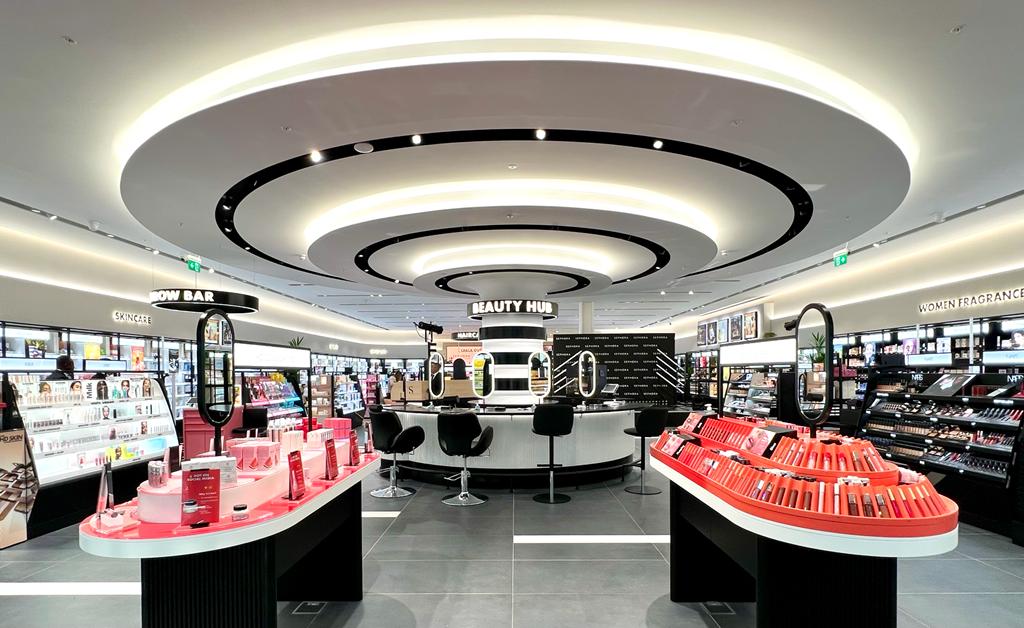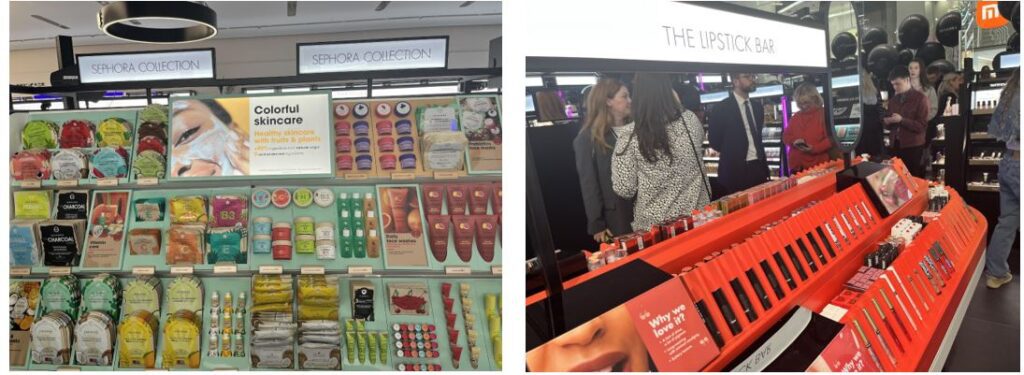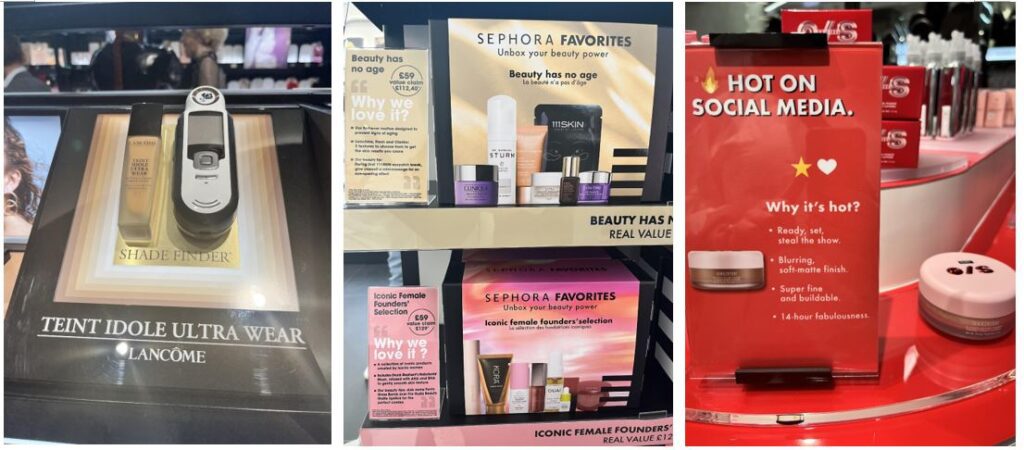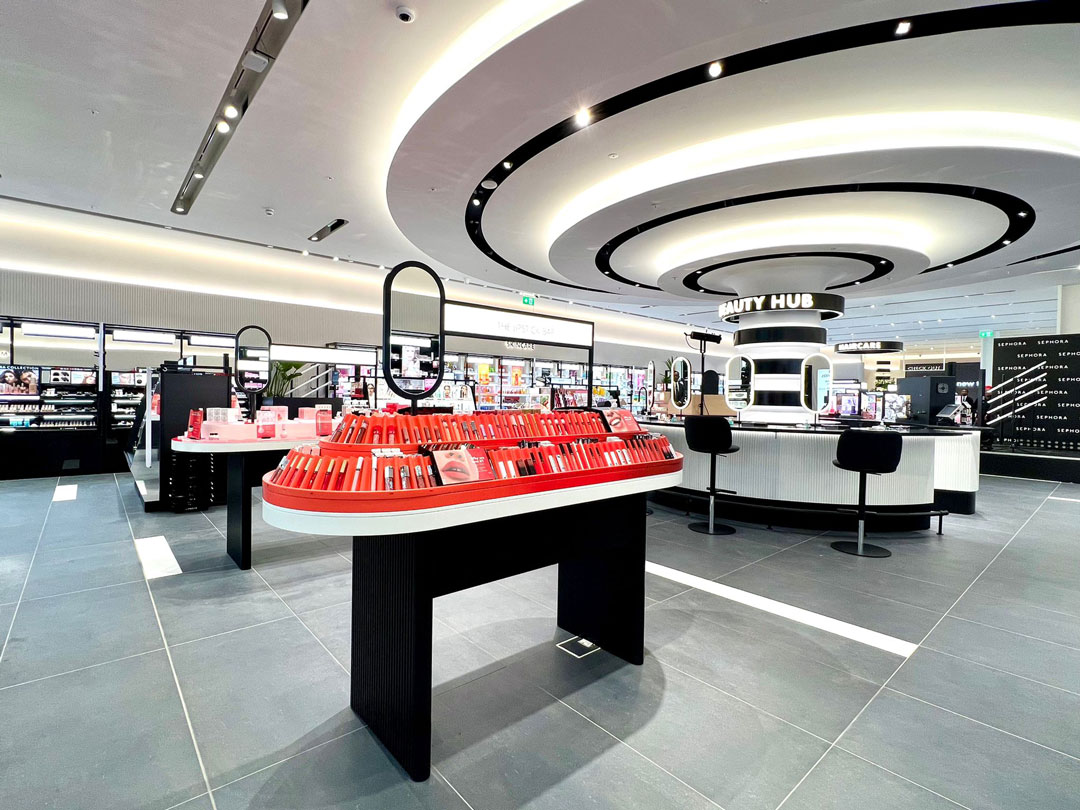Sephora’s new store in Westfield White City, which opened in March this year, marks its return to physical retail in the UK after it stopped trading in the UK in 2005. The opening follows the retailer’s takeover of FeelUnique’s website in October 2022.
Investing in physical space will help Sephora, a fascia more known internationally, to boost its visibility in the market, as more than three in five adults in the UK claimed they had never used or heard of Sephora, as of November 2022.
The retailer has clearly set high standards for its future store roll-out plans, and so what can store-based retailers learn from the new Sephora flagship store?
1. Leading with professional treatments
The store is brought to life by the in-store Beauty Hub. Positioned in the centre of the store, it features a range of different services, carried out by both in-house Sephora experts and brand representatives.
The range of professional treatments is expansive, with an array of express skincare treatments on offer from specialists such as Dermalogica and Elemis. In terms of makeup services, the retailer has taken a tiered approach, with treatments ranging from £30 ($56) for a ‘Feature Focus’ appointment, up to £60 ($112) for ‘Full Glam’. Offering a range of price points will ensure that treatments are accessible for a wide range of shoppers, particularly relevant for the likes of Sephora, which attracts a younger audience.

Source: TRACE Publicity
2. Encouraging experimentation
The store adopts the feel of a ‘beauty playground’, helping to foster a destination shopping experience. As well as private label options, Sephora offers a range of exclusive brands, such as Makeup by Mario and Ariana Grande’s REM Beauty. Whilst these may be available to buy online, one in four adults would typically visit a store to try a product before purchasing a premium/luxury branded beauty and personal care product they hadn’t used before. Making these products accessible in a physical retail setting will enable shoppers to experiment with new products before buying, helping to drive footfall.
The store also features Sephora’s first ever lipstick bar, which covers an array of branded colours and finishes. An engraving service across fragrance is also available to in-store shoppers, offering a more unique experience for shoppers.
Beyond the product range, an array of in-store technologies, such as virtual try-ons and diagnostic tools, are on offer to help shoppers find the right product for them. Branded shade finders from the likes of Lancôme are available across colour cosmetics, whilst Sephora colleagues are also on-hand to offer advice to those less comfortable using these virtual tools.

Source: Mintel
3. Attracting the Sephora target audience
The new opening is well positioned to cater for the retailer’s target demographic: Gen Z shoppers. A Hot On Social Media corner will resonate with those in younger demographics who are avid users of platforms such as TikTok and Instagram, which are often key drivers behind beauty products going viral. Calling out trending products in-store will help shoppers in making the links between the physical experience, and what they’ve seen on social media.
A fixture that highlights ‘The Next Big Thing’ in terms of products, also illustrates how the retailer is catering for their target market, with younger shoppers typically more interested in keeping pace with beauty trends.
The store also includes a fixture dedicated to Sephora Favourites which are value-orientated boxes containing a variety of beauty brands. Sephora calls out the RRP for the total contained products, benchmarked against the retailer’s cheaper price. These boxes are also themed, for example, an ‘Iconic Female Founders’ selection is likely to appeal to female shoppers. A combination of communicating value, combined with highlighting important causes, will resonate amid both a challenging economic setting, combined with one whereby ethical issues are at the forefront of shoppers’ minds.

Source: Mintel
To find out more about Mintel research, please visit mintel.com/spotlight.
Maddie Malone is a Research Analyst for Mintel’s Beauty and Personal Care Reports team in the UK. Her responsibilities involve conducting research and writing reports that focus on the BPC categories within the UK market.
This article was first published in the Winter issue of Retail Beauty:
- For more news and updates, subscribe to our weekly newsletter
- Follow us on Instagram
- Like us on Facebook

